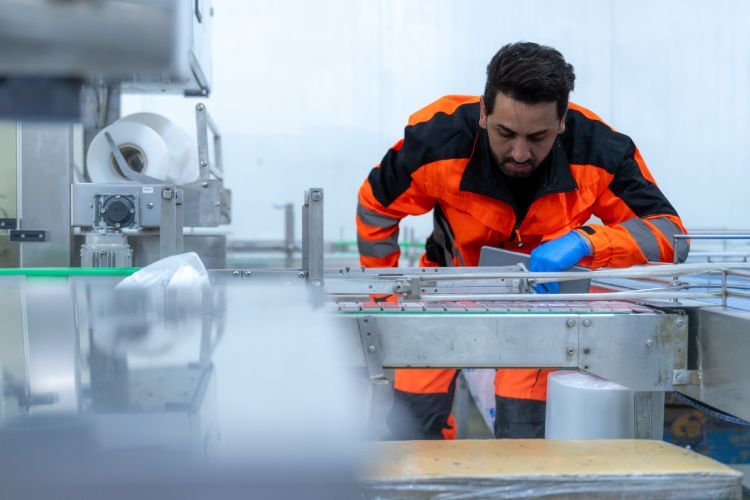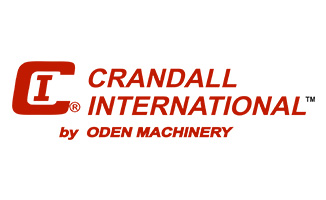
Every second of downtime on a production line can translate into lost revenue, missed deadlines, and frustrated customers. At the heart of many of these lines are liquid filling machines—precision-built systems designed to deliver consistent accuracy and speed. Yet, even the most advanced machines are only as reliable as the care they receive.
Regular maintenance is not just about keeping the equipment running; it’s about safeguarding efficiency, protecting product integrity, and preserving the significant investment businesses make in this machinery. A well-maintained filling machine can operate for years with minimal issues, while neglected equipment often results in costly breakdowns and interruptions.
Creating and following a structured preventative maintenance program is essential for long-term success.
The Importance of Proper Liquid Filling Machine Maintenance
Maintaining liquid filling machines requires a strategic approach. Fortunately, the benefits extend far beyond simply preventing breakdowns.
Improve Operational Efficiency
A single malfunctioning seal or misaligned conveyor can create bottlenecks that ripple through the entire process. And in high-volume environments, even a few minutes of downtime can translate to thousands of units lost—underscoring the value of staying ahead with preventive care.
Routine maintenance minimizes these risks and keeps operations moving seamlessly, allowing companies to meet demand with confidence. When machines run smoothly, production lines can maintain consistent output without unexpected stoppages.
Reduce Repair Costs
Emergency repairs are both expensive and disruptive. A failure that could have been prevented with a simple inspection may require urgent replacement of parts, technician overtime, and expedited shipping.
Preventive maintenance turns potential crises into manageable routine fixes, helping companies save substantially on repair budgets. Furthermore, proactive part replacements allow businesses to order components at normal lead times instead of relying on costly rush shipments.
Maintain Quality & Compliance
In industries like pharmaceuticals, cosmetics, and food and beverage, even small deviations in fill accuracy can lead to compliance violations, wasted product, or recalls.
Clean, well-calibrated machines keep fills precise and contamination risks low. Maintenance safeguards both the brand reputation and customer safety. Routine upkeep also guarantees that documentation for audits and inspections demonstrates compliance with stringent quality control standards.
Protect Investments
Liquid filling machines represent a significant capital expenditure. Routine inspections, lubrication, and part replacement extend their lifespan, helping the equipment continue to deliver value for years. Businesses that prioritize care for their machines maximize ROI and avoid premature equipment replacement.
This mindset not only reduces capital spending but also helps production teams remain familiar with their machines rather than having to retrain on replacements prematurely.
Daily Liquid Filling Machine Maintenance Tasks
Daily maintenance forms the foundation of a reliable preventive maintenance program. These checks and actions address the wear and tear that naturally occur during operation.
Perform Visual Inspections of Components
Operators should carefully examine hoses, seals, nozzles, and belts for signs of cracks, leaks, or misalignment. Spotting discoloration on seals, wear on belts, or residue near nozzles can indicate an issue in its early stages. Visual checks should also include looking for loose fasteners or foreign objects inside the machine. Immediate intervention prevents small defects from escalating into major failures and protects the entire line from cascading issues.
Clean Nozzles, Valves, & Contact Surfaces
Residue buildup is one of the most common causes of inaccurate fills and product contamination. Cleaning nozzles and contact surfaces at the end of every shift removes product traces, prevents cross-contamination, and preserves hygienic conditions. In industries where sanitation is critical, operators should use FDA-approved cleaning agents and document cleaning protocols for compliance. Neglecting this step can result in hardened deposits that are much more difficult to remove and could permanently damage precision components.
Check for Leaks, Drips, or Unusual Noises
Even minor leaks can lead to product loss, safety hazards, or mechanical wear. Operators should inspect the machine for drips under fittings and listen for unusual sounds like grinding, knocking, or hissing. These noises often signal mechanical or pneumatic issues that require prompt attention. For example, hissing can indicate worn pneumatic seals, while grinding might suggest bearing failure. Catching these signs early can help save thousands of dollars in repair costs.
Lubricate Moving Parts
Friction is the enemy of longevity in mechanical systems. Daily lubrication of moving parts—following the manufacturer’s specifications—keeps operation smooth, reduces heat generation, and prolongs component life. Operators must use the correct grade of lubricant to avoid breakdown or contamination. Over-lubricating should also be avoided, as excess lubricant can attract dust and debris, leading to premature wear.
Confirm Calibration & Accuracy
Regular calibration prevents underfilling or overfilling, which can cause waste, rework, or customer dissatisfaction, and maintaining calibration accuracy safeguards both regulatory compliance and brand reputation. Automated calibration systems should be checked against manual measurements to confirm reliability. Test a sample batch at the start of production to verify the machine delivers the intended fill volume.
Weekly Liquid Filling Machine Maintenance Tasks
Weekly tasks take maintenance a step further, making sure the machine’s broader systems remain stable and efficient.
Inspect Conveyor Belts & Alignment
A misaligned or worn conveyor belt can cause bottles to jam, tilt, or miss nozzles entirely. Weekly inspections should include checking belt tension, tracking alignment, and looking for frayed edges. Using a straightedge tool can help verify alignment. Correcting small misalignments before they worsen avoids costly shutdowns and uneven wear on belts and drive components.
Check Electrical Connections & Sensors
Loose wires or failing sensors can cause erratic machine behavior or stop production altogether. Inspecting terminals, connectors, and sensor lenses weekly helps maintain accurate machine control. Dust or residue on sensors should be gently cleaned to avoid interference. In addition, testing sensors under operating conditions confirms they respond accurately to changes in product positioning.
Clean Filters & Strainers
Filters prevent particles from entering pumps and nozzles, protecting the entire fluid system. A clogged filter can reduce flow rate and strain pumps. Weekly cleaning or replacement of filters and strainers supports uninterrupted, efficient operation. This process is particularly important in environments with viscous products or where particulates may accumulate over time.
Examine Wear Parts Such as O-Rings & Gaskets
Seals degrade over time due to pressure, heat, and contact with liquids. Weekly checks allow operators to replace compromised O-rings or gaskets before they fail completely. Examining seals under magnification can reveal small cracks invisible to the naked eye. Preventive replacement reduces the risk of leaks that could cause downtime and sanitation concerns.
Verify Safety Features
Emergency stop buttons, interlocks, and guarding mechanisms safeguard operators. Weekly functional testing confirms these features remain fully operational. Operators should document test results and immediately escalate any irregularities. Safety features are critical for protecting workers and meeting regulatory requirements.
Monthly Liquid Filling Machine Maintenance Tasks
Monthly tasks delve deeper into system performance. The goal is to address elements that gradually drift out of specification.
Inspect Pump Systems & Fluid Pathways
Pumps are critical to delivering consistent volume. Monthly inspections should include checking for pressure irregularities, cavitation signs, and internal wear. Inspecting pipelines for scaling or residue buildup keeps flow steady and prevents contamination, particularly in industries where thick or sticky fluids are common. Additionally, flow meters can help verify consistent output.
Tighten Bolts, Fasteners, & Clamps
Vibration over time can loosen structural components and lead to misalignments or even hazardous failures. Systematically tightening hardware each month preserves the machine’s integrity and stability. Operators should use torque wrenches to apply manufacturer-recommended tightness in order to prevent both loosening and over-tightening.
Review Lubrication Systems
Proper lubrication distribution is vital for preventing uneven wear across components. For machines with centralized lubrication systems, monthly reviews confirm reservoirs are filled and delivery lines are not blocked. Any signs of clogged or leaking lines should be addressed immediately to avoid component failure.
Test Emergency Stop Mechanisms
While weekly checks confirm responsiveness, monthly testing should simulate operational conditions. This additional check verifies that the entire safety circuit, including relays and actuators, functions as intended under load. Detailed logs of these tests provide evidence of compliance with workplace safety regulations.
Review Software & Control Systems
Modern filling machines rely heavily on software-driven controls. Monthly reviews should involve checking system logs for errors, updating firmware if recommended, and confirming control interfaces remain user-friendly and accurate. Backup copies of system settings should be created to prevent data loss during updates.
Yearly Liquid Filling Machine Maintenance Tasks
Yearly maintenance provides the most comprehensive review and prepares the machine for another year of reliable service.
Conduct Comprehensive Inspections
An annual top-to-bottom inspection by qualified technicians identifies issues invisible to daily or monthly checks. This process includes examining bearings, motor windings, pneumatic systems, and structural welds. Using specialized tools such as thermal imaging cameras or vibration analyzers also helps uncover potential failures before they occur.
Replace High-Wear Components
Certain parts are subject to inevitable wear regardless of care. Replacing bearings, belts, and seals annually prevents these components from failing mid-production. A proactive approach avoids unplanned downtime and gives technicians the chance to install updated components that may improve reliability.
Test System Calibration & Performance
Over time, even well-maintained machines can drift from their specifications. Annual calibration testing validates fill accuracy and consistency, keeping production aligned with regulatory standards and customer expectations. Comprehensive testing should include multiple container sizes and fill levels to confirm accuracy across production requirements.
Update Software or Control Systems
Annual updates to the control software or programmable logic controller (PLC) firmware can fix bugs, improve efficiency, or add features. Keeping systems updated strengthens reliability and compatibility with other production technologies. It also bolsters cybersecurity protections, reducing risks from outdated systems.
Review Operator Training & SOPs
Human error often contributes to equipment problems. Annual training refreshers keep operators aligned with best practices. Updating standard operating procedures makes sure they reflect the latest safety and maintenance guidelines as well as incorporate lessons learned from the past year.

Liquid Filling Machine Maintenance Best Practices & Tips
A structured schedule is only part of an effective maintenance strategy. Implementing broader best practices makes liquid filling machine maintenance efforts yield maximum benefits.
Establish a Preventive Maintenance Schedule
A preventive maintenance schedule serves as the backbone of equipment care. Without structure, tasks are often overlooked until a breakdown occurs.
Scheduling tasks by daily, weekly, monthly, and annual intervals builds consistency. Software-based scheduling systems can send reminders, record task completion, and provide analytics on performance, helping businesses optimize their maintenance programs.
Train Staff Thoroughly
A machine is only as reliable as the people operating it. Thorough training equips staff with the skills to identify potential issues, perform routine maintenance, and follow safety protocols. Ongoing education keeps operators up-to-date with machine upgrades and best practices.
Investing in staff training reduces operator error, one of the leading causes of equipment problems.
Use Manufacturer-Approved Replacement Parts
Liquid filling machines are engineered to precise specifications. Using parts that don’t meet those standards can compromise performance, void warranties, and shorten equipment life. Manufacturer-approved parts guarantee compatibility and reliability. They also prevent safety and sanitation standards from being compromised by inferior materials.
Keep Detailed Maintenance Logs
Maintenance logs are more than paperwork. They are a roadmap of your machine’s health. Documenting every inspection, cleaning, and repair helps identify recurring problems and informs predictive maintenance strategies.
Logs also provide critical proof during audits and demonstrate compliance with safety and quality control standards.
Incorporate Predictive Maintenance Technologies
Modern technologies such as vibration sensors, temperature monitors, and IoT-based tracking systems can identify problems before they occur. By analyzing real-time data, predictive systems detect anomalies that indicate impending failures and allow companies to schedule repairs at convenient times, further increasing productivity.
Partner with an Experienced Supplier
Working with a trusted liquid filling machine supplier like Oden Machinery means you’ll have direct access to experts. At Oden, we can supply certified replacement parts, offer on-site servicing, and provide technical support tailored to your equipment. This partnership keeps maintenance practices aligned perfectly with your machine’s engineering to maximize performance and lifespan.
Protect Your Equipment & Your Bottom Line by Partnering with Oden Machinery
Consistent maintenance of liquid filling machines is a proactive strategy that pays dividends in uptime, quality, and cost savings. By implementing structured daily, weekly, monthly, and yearly tasks, businesses can avoid unplanned downtime and maximize the long-term return on their equipment investment.
Don’t wait for a breakdown to realize the importance of maintenance. Make it part of your daily operations.
At Oden Machinery, we specialize in supplying used liquid filling equipment that meets the highest standards of quality, performance, and reliability. Every machine is thoroughly inspected, refurbished, and supported with expert service to ensure your production line operates smoothly and efficiently.
Whether you’re looking for expert support, OEM-certified parts, tailored maintenance solutions, a single filler or a complete packaging system, we have the equipment and expertise to match your needs and keep your liquid filling machines running at peak performance.
Contact us today to learn more about our available inventory. Together, we can protect your investment and keep production running smoothly.


